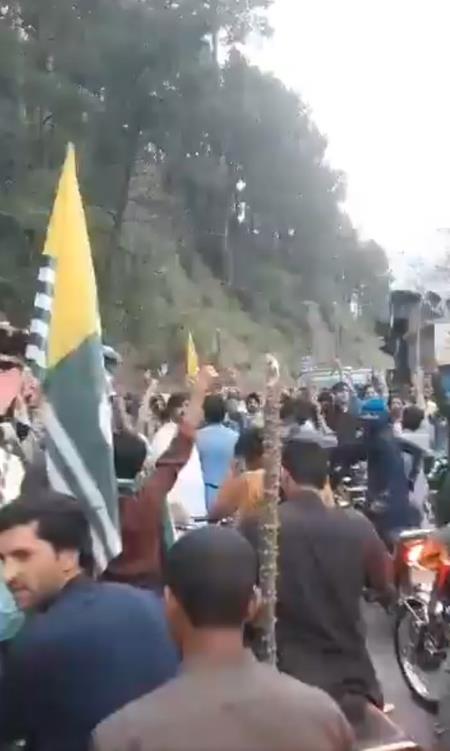
Pok Crisis: Govt Invites Protesters For Talks Pakistani Establishment Blames 'External Forces'
Notably, on the call of Shaukat Nawaz Mir, the central leader of JKAAC, workers and supporters from all cities and towns across Pakistan-occupied Kashmir (PoK) held a long march towards Muzaffarabad on October 1.
In the Kotli area, a complete shutdown was observed. As all major entry and exit routes were blocked by the government forces, sit-in protests were organised by JKAAC workers.
In Dhirkot, a convoy of approximately 2,000 JKAAC workers from Rawalakote and Bagh marched towards Muzaffarabad. However, police opened fire on the protesters when they reached Dhirkot. Reportedly, four civilians were killed and approximately 16 individuals, including civilians and local police personnel, were injured during the clashes.
Similarly, in Muzaffarabad, a sit-in protest was organised by approximately 2,000 people at Lal Chowk against the casualties in Dhirkot.
But the protest was later shifted to the Muzaffarabad bypass to await the convoys arriving from other places. Reports indicated aerial firing and tear gas shelling by the Pakistani security forces. Two civilians were reported killed there also.
In Dadyal, a convoy of JKAAC workers from Chakswari and Islamgarh, marching towards Muzaffarabad, was fired upon by police, resulting in the deaths of two individuals and injuries to approximately ten others.
As the death tally in PoK crosses the mark of a dozen, revealing the barbaric force used by the Pakistani forces against their own citizens, the Chief Secretary of the PoK government has issued a notice inviting JKAAC leaders for negotiations. However, the PoK government also warned the JKAAC leadership of strict action if the protests were not called off.
Notably, JKAAC workers in London have also announced a protest in front of the Pakistan High Commission in London on October 2.
It is ironic that pro-Pakistani establishment social media platforms are portraying these indigenous protests as the handiwork of external agencies, rather than moving towards a settlement with the affected population.
This narrative of blaming external forces for their own internal turmoil is not new. Historically, the Pakistan establishment has had a pattern of blaming every internal upheaval on external forces.
The Tehreek-e-Taliban Pakistan (TTP) insurgency has repeatedly been dubbed by Inter-Services Public Relations (ISPR) as "Indian sponsored", while the armed rebellion in Balochistan is labelled under the narrative of "Fitna-al-Hindustan".
This reflects a continuation of the establishment's tactic of deflecting accountability by externalising blame.

Legal Disclaimer:
MENAFN provides the
information “as is” without warranty of any kind. We do not accept
any responsibility or liability for the accuracy, content, images,
videos, licenses, completeness, legality, or reliability of the information
contained in this article. If you have any complaints or copyright
issues related to this article, kindly contact the provider above.
Most popular stories
Market Research

- New Cryptocurrency Mutuum Finance (MUTM) Raises $15.8M As Phase 6 Reaches 40%
- Noveba Brings Apple Pay To Customers
- Mutuum Finance (MUTM) Approaches Next Phase With 14.3% Price Increase After Raising $16 Million
- Cregis And Kucoin Host Institutional Web3 Forum Discussing Industry Trends And Opportunities
- Primexbt Expands Crypto Futures With 101 New Coins, Delivering Best-In-Class Trading Conditions
- BTCC Exchange Announces Triple Global Workforce Expansion At TOKEN2049 Singapore To Power Web3 Evolution




















Comments
No comment